Guild S-100 Polara Kim Thayil review: a grunge machine and so much more
The long-awaited signature for Kim Thayil transcends its role as just a Soundgarden machine
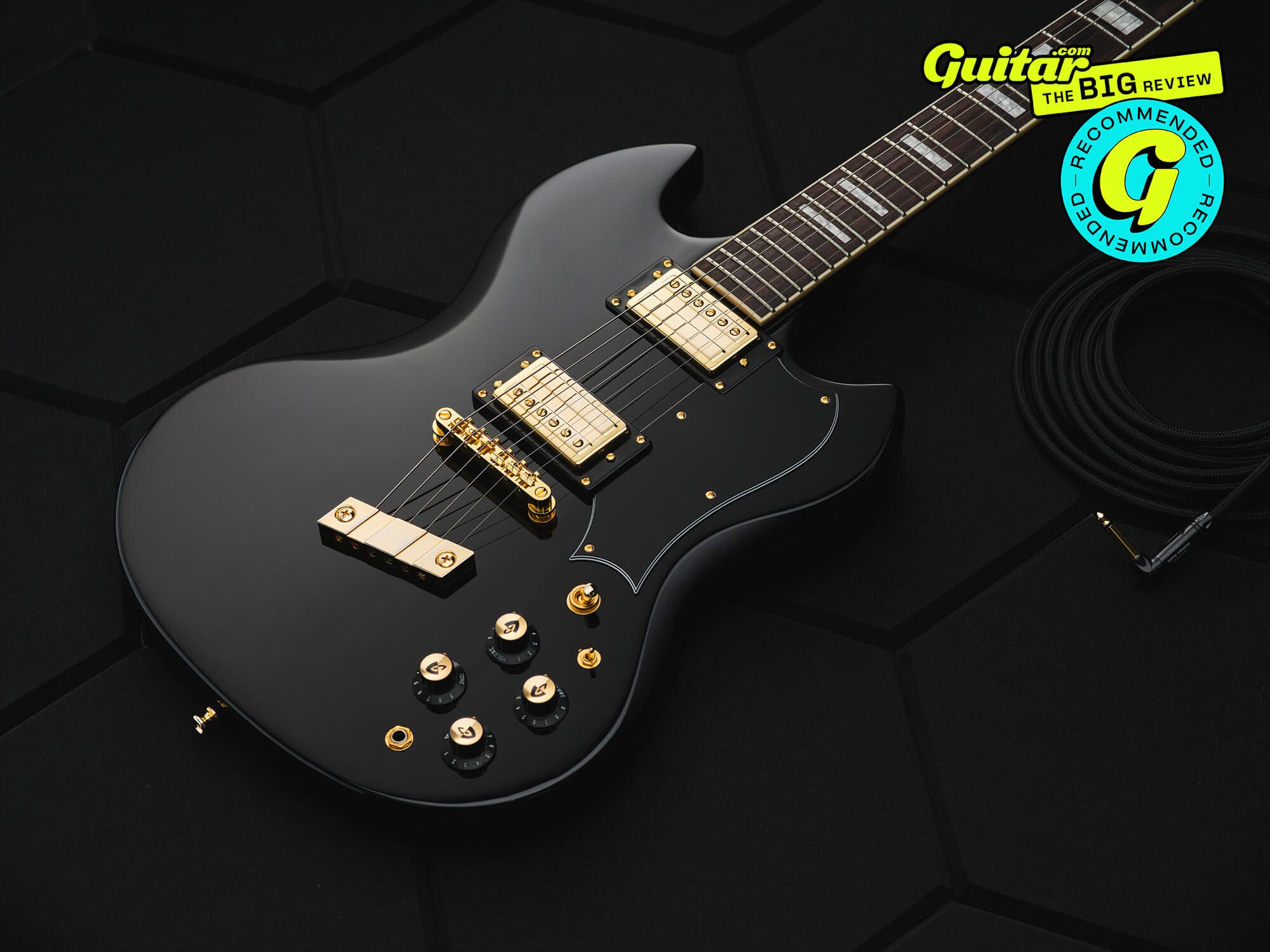
Guild S-100 Polara Kim Thayil. Image: Adam Gasson
Review Overview
Our rating
9
Our verdict
$899, guildguitars.com
The Guild S-100 Polara is, for some, a sleeper 70s hit; a cool, offbeat electric guitar made in the wake of the hard rock boom. For many others, though, it’s intrinsically associated with just one guitarist: Soundgarden’s Kim Thayil, who has played one for basically his entire career. And so, as Guild celebrates its 70th birthday across the board, finally making a long-awaited signature S-100 for Kim seems a no-brainer. So here we are.
Two versions of the guitar have been released – here we have the standard Asian-made import version in black, as opposed to the limited-edition USA-made version in white. The import version is, importantly, a fraction of the price of the 30-guitar USA run – it’s around $900, placing it squarely in what has become the upper-midrange for electrics.
The S-100 platform provides a striking silhouette – you’re not going to mistake it for anything else at any distance. The import version wears a gloss black finish and gold hardware. This, combined with the bold but not pointy cutaways, the thick body and the neck that’s almost entirely free of the body makes it come across as the slightly wonky child of a Les Paul Custom and an SG Standard.
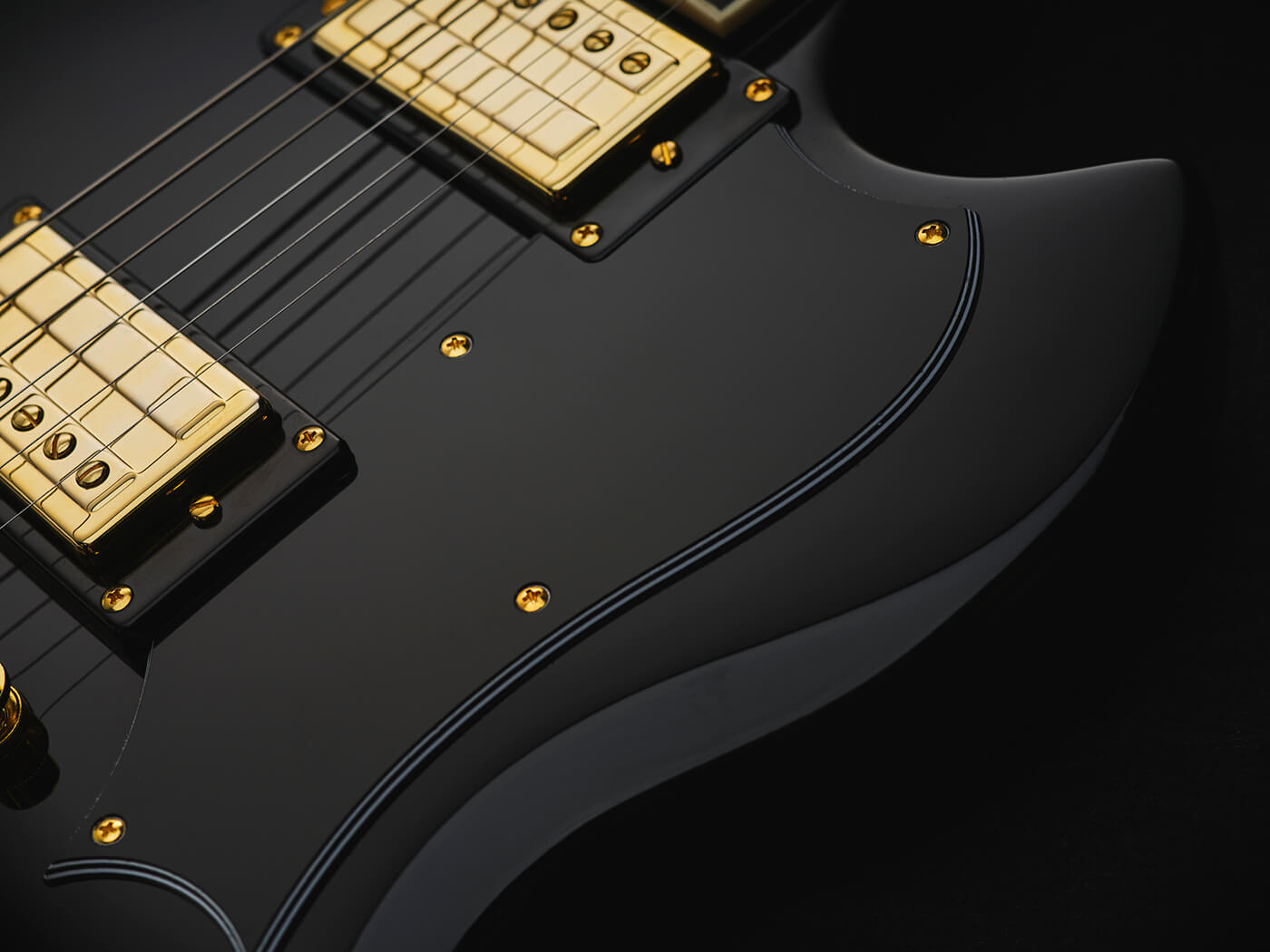
If that sounds like a bad thing, well, it’s not. It presents beautifully: the angled, blocky tailpiece, the block inlays and overall sheer chunkiness of the thing all balance out the slightly flashy nature of the black-and-gold look, and the mild offset to the body gives it an in-motion feel rather than just a lopsided look.
The signature touches are subtle, too – there’s no huge front-of-the-headstock names here. From the front, the only visible demarcation of Kim’s involvement is a geometric design on the truss rod cover, one that plays on Soundgarden’s King Animal cover. The rear control cover bears Kim’s signature and the Badmotorfinger logo.
Kim Thayill bought his first S-100 in the late 1970s, and the build here reflects electric guitar traditions of the time: we’ve got a rosewood fretboard atop a mahogany neck, set into a mahogany body, as well as a good ol’ oversized headstock. Electronics are a pair of Alnico II Guild HB-1 humbuckers, wired in in a familiar dual-volume, dual-tone layout. There is, however, the addition of a phase switch, which flips the polarity of the bridge pickup. More on that later, but for now, what’s it like to play?
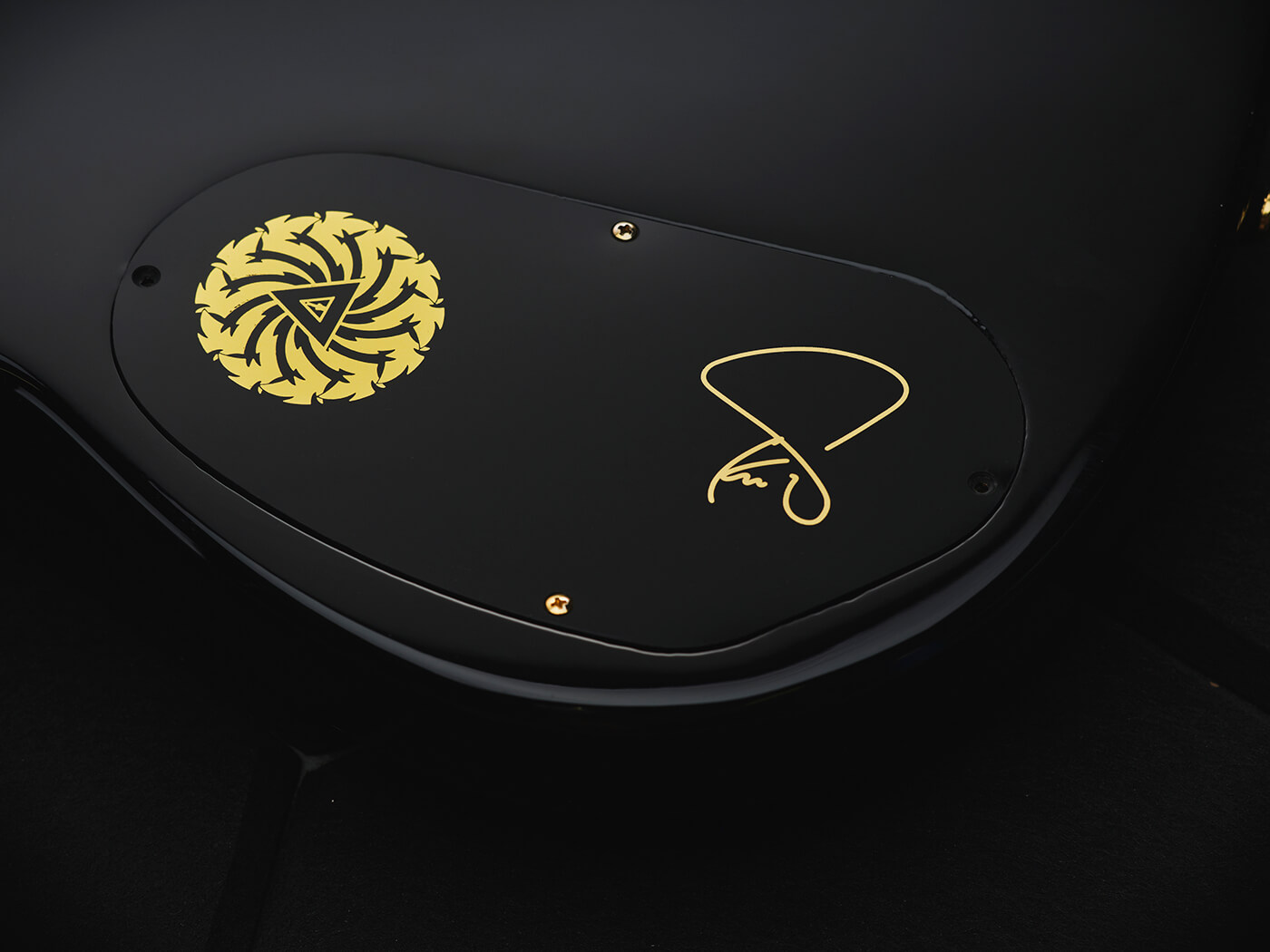
In Use
Picking up the guitar the first thing I’m struck by is its balance – the body sits rock-steady in a comfy playing position whether I’m sat or stood. This is absolutely not the case with every set-neck double-cut, but here the mahogany body is thick and heavy enough that, even with the big 70s Guild headstock, the neck isn’t going diving anytime soon.
That neck has been carved to quite the hand-filling heft. Although it’s not a full baseball bat, it’s on its way. Given this, as well as the electronics layout and relatively heavy body, you’ll probably be totally unsurprised to hear that the playing experience is quite Les Paul-like. That is, until you get to anything above the 15th fret, where the deep double-cutaways give you a lot more access. The neck heel can certainly be felt, but it doesn’t get in the way to the point where you have to totally reposition your thumb to properly fret a note.
This generous upper-fret access combined with the relatively flat fingerboard radius makes lead playing a lot of fun. And, while not polished to a mirror, the medium frets feel pretty great to play out of the box, too. Most importantly I found absolutely no choked-out bend points across the fretboard. The worst I can point to on the neck is a tooling mark or two on the rosewood of the ’board itself, but these couldn’t actually be felt.
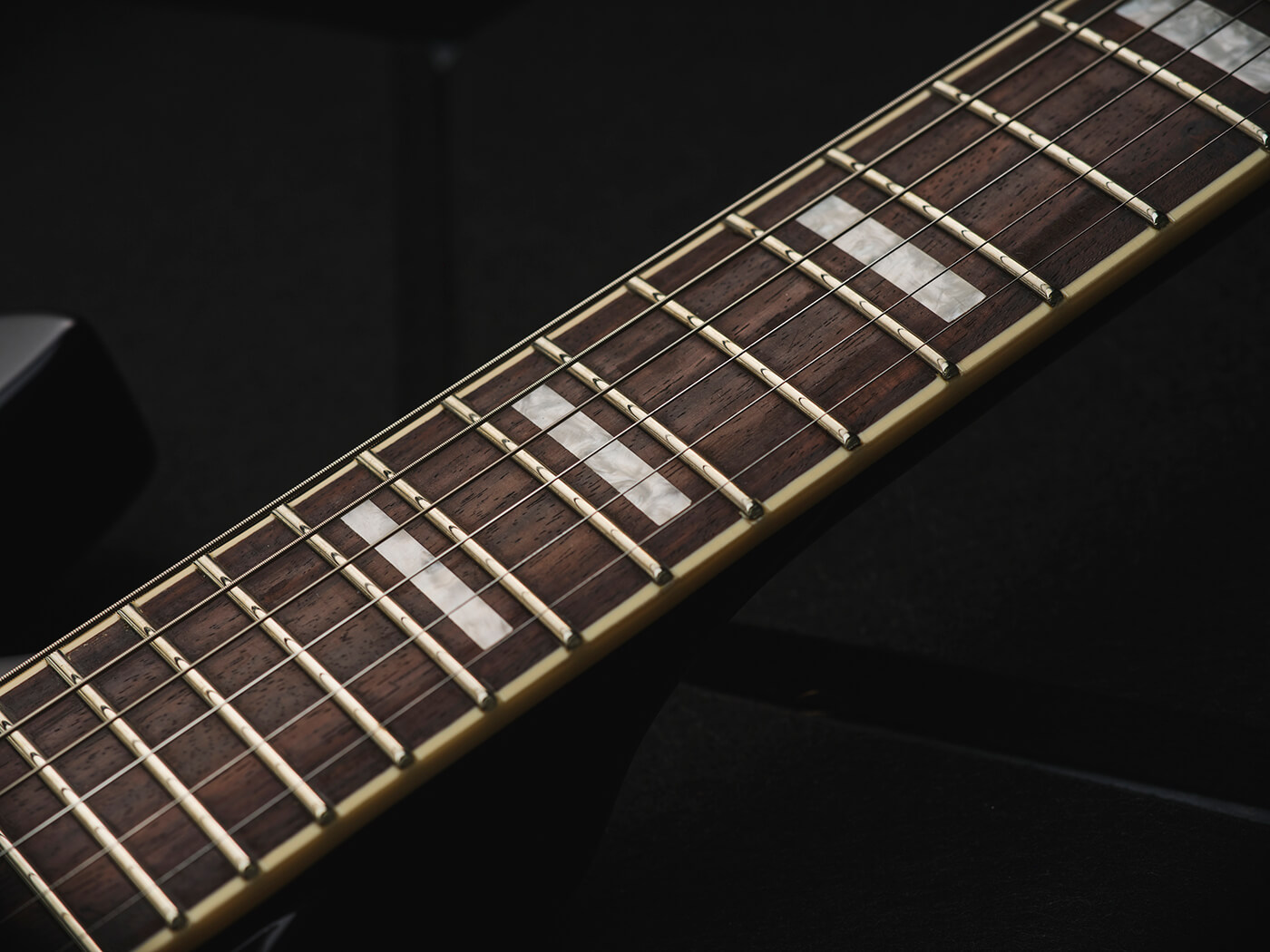
The actual pickups aren’t bespoke for this signature. But, given that Guild’s HB-1s recreate the 70s Guild humbuckers Kim played for his entire career, they don’t really need to be. They sound, unsurprisingly, like 70s humbuckers: bold and brash, but more so via their midrange bite rather than any trebly squeal or bassy thump.
Cleans perform perfectly pleasantly, but the real fun comes when you kick on some overdrive and head down to drop D. Like a neglected food-waste bin someone’s kicked over, grunge just doesn’t stop oozing out of this thing – the throaty humbuckers, the sheer mass of mahogany filling your hand, the ample space below the strings and between the pickups, they all encourage you to hammer out some powerchord-moving caveman riffs. And the sonic rewards for doing so are bountiful indeed.
Oh, and a quick note on that phase switch – engage it in the middle position, and you get the difference between (rather than the sum of) the two pickups. This means a thin, honky ‘toe-down wah’ sound. While not something you’ll want to use on all the time, I did find it worked really well with fuzz for some intriguing and spiky lead sounds. Oh, and it can – importantly – do an approximation of the Rusty Cage intro tone.
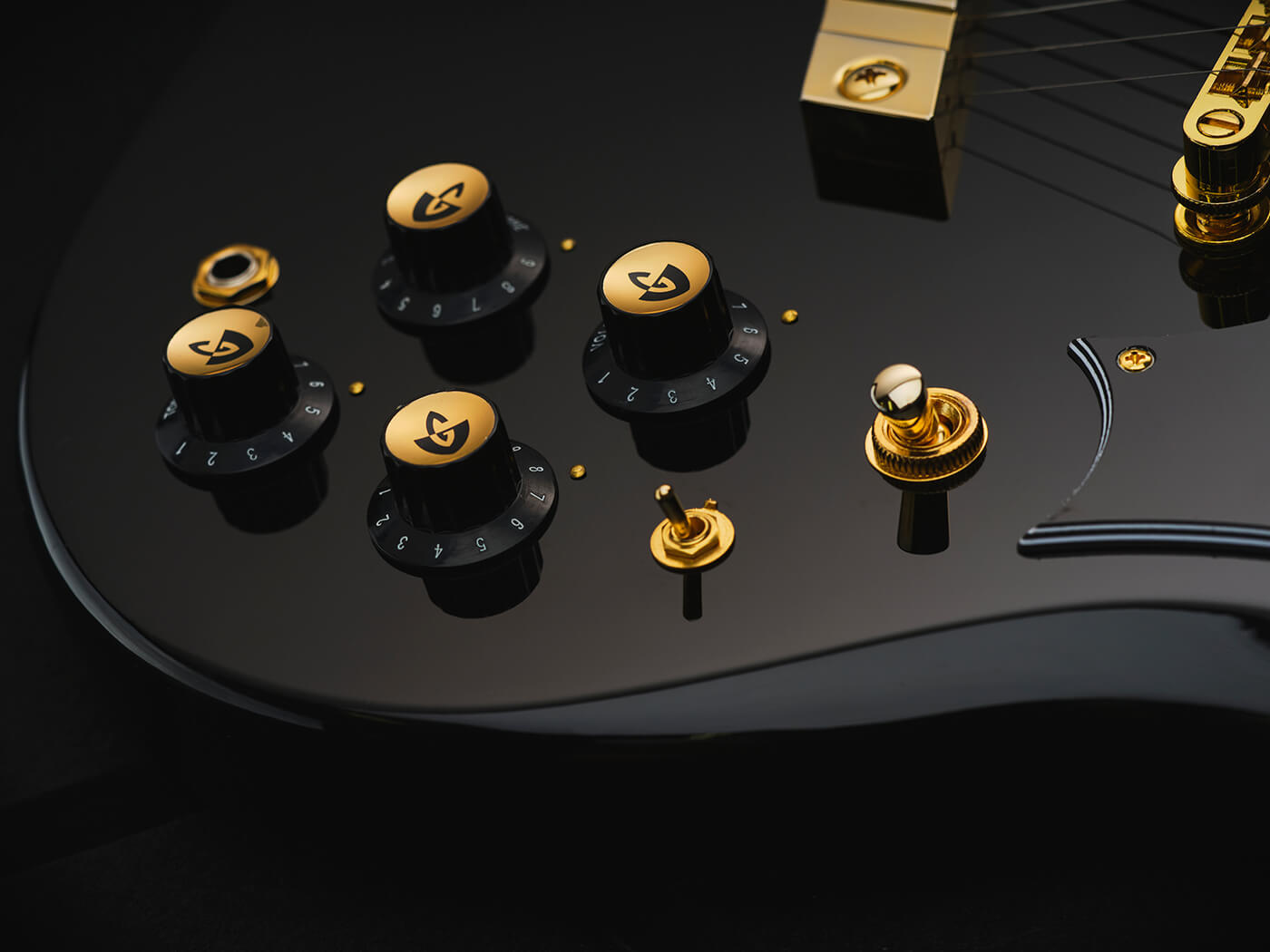
A grunge machine and more
Overall, it’s easy to relate the S-100 to the music that Kim Thayil pioneered with it. On the one hand, it’s rooted in big 70s rock tradition: big headstock, big neck, big riffs, and more mahogany than all your gran’s furniture put together. But on the other, it showcases a scrappy recombination of what came before, and makes its own thing.
Mix up the heft of a Les Paul and the all-access freedom of an SG, give it a good dusting of pawn-shop charm, and price it somewhere between the upper-bound of Epiphone and the lower-bound of Gibson, and you have one damn appealing guitar, one that goes well beyond the needs of just smashing out Soundgarden riffs.




